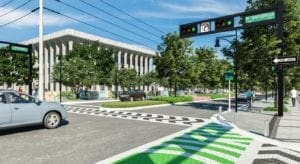
Realizing Your Vision With Technology: The Next Generation of Show-And-Tell
Discover the 3D design software breakthroughs that are enabling designers to accomplish things that CAD users could only dream about.
Learn from award-winning professionals — explore our whitepapers, blogs, and the latest industry updates.
Join our dynamic organization of engineers, land surveyors, landscape architects, environmental scientists, and architects!
Talk to a market leader today! We’ll answer any questions you have about our professional services.
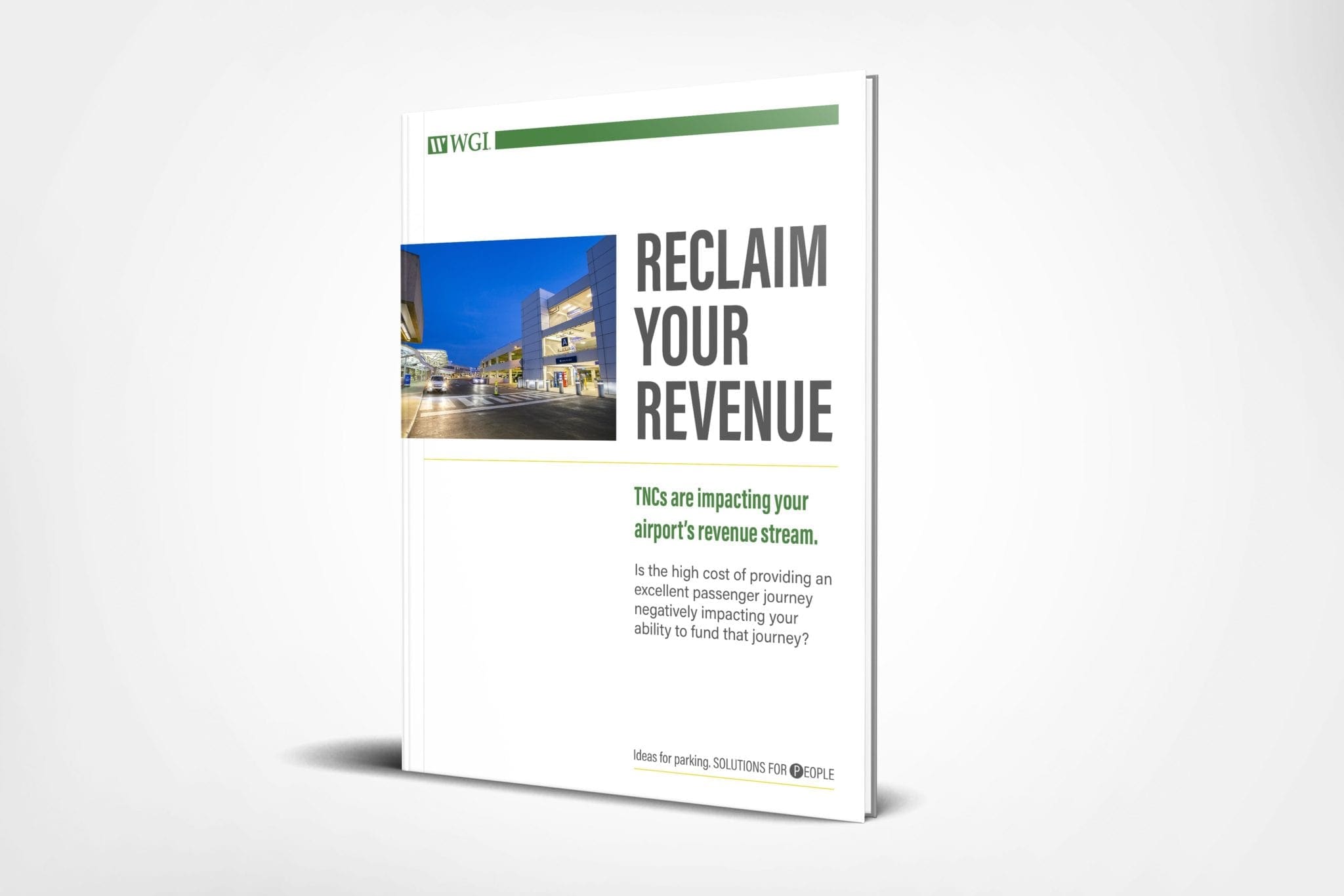
Transportation Network Companies (TNCs) are a regular part of everyday life at most airports. A disruptive force just five years ago, they are now the most prominent competitor in the transportation mix jockeying for valuable curbside real estate.
Using publicly available data, we can illustrate the impact TNCs have on airports like San Francisco International Airport (SFO) — and the trend is predictably repeating nationwide. Airline passengers are up 18.5% over the last reported three years, yet parking for those passengers is down 7.5%.
Airports are generally expected to support development bonds with transportation revenues such as self-parking. Therefore, generating revenue from TNCs and other transportation options is
critical to effectively fund a great passenger experience.
A recent airport revenues parking study found that after TNCs began service, a significant decline in parking revenues followed (Henao, et al., 2018). Others suggest that as many as 25% of TNC
trips would otherwise utilize a parking space, and airport figures are very likely much higher.
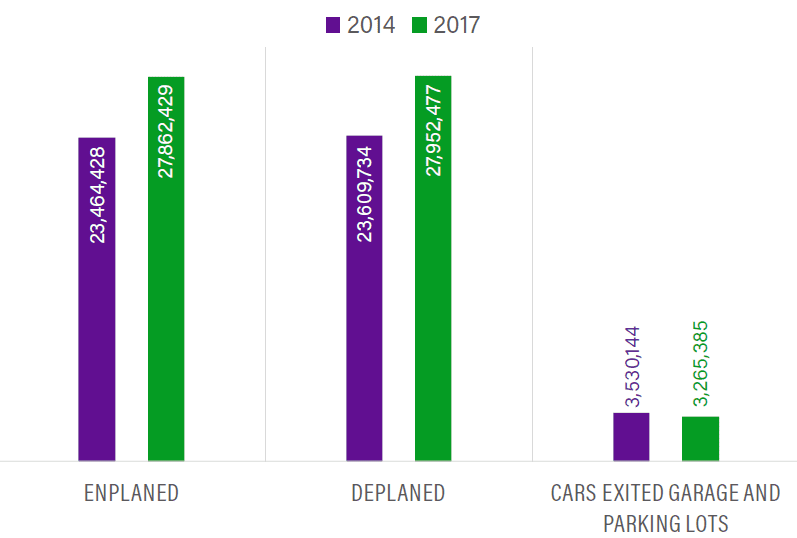
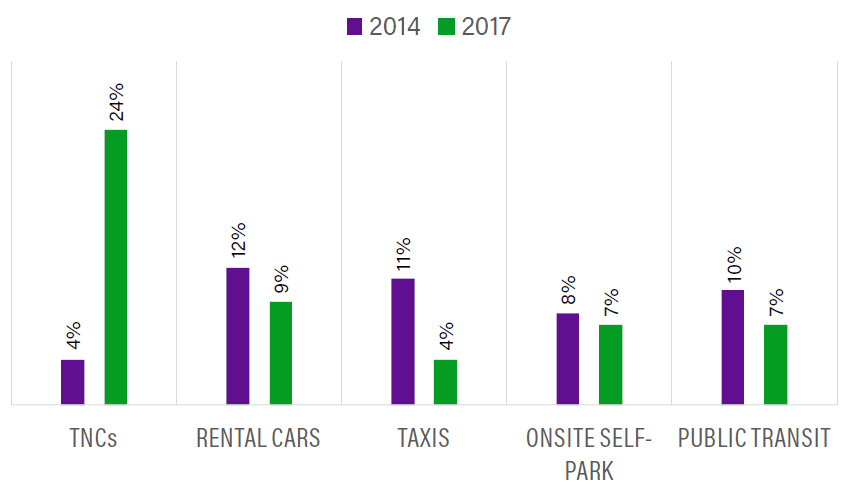
TNCs rapid adoption and growth is a disruptive influence at nearly every U.S. airport. At many, TNC usage significantly decreases taxi and business rental car use while simultaneously lowering airport parking demand.
As a result of TNCs proliferation, airport parking garages and lots don’t achieve previous revenue levels. The net effect is very congested curbside pick-up and drop-off areas – and therefore a dramatic increase in curbside real-estate value.
For airports, understanding this important fact is primary to increasing their revenue; when consumer demand exceeds curbside real-estate supply, the opportunity to increase revenue is present.
There is clearly a consumer shift to more TNC utilization, resulting in a decrease in self-parking and car rentals, but much busier curbs.
Curiously missing from these survey results is private off-site parking facilities that possibly account for a significant percentage of passengers’ land-side parking preferences. Typically, these facilities are laden with perks like free car washes, valet or VIP drop-off and pick-up services, and even pet hotels. Consumers respond not only to prices, but also to perks and stresses inherent in each choice.
These off-site parking facilities, once beneficial to airports, helped alleviate parking congestion during peak travel periods. Today, they don’t supplement available parking inventory – they take away paying customers from on-site airport parking facilities with great success. Many desirable passenger journeys do call for the perks and extras that a private for-profit business can provide in the off-site facilities.
The introduction of TNCs had a major impact on parking, taxi, and rental car utilization, as illustrated above. The phenomenon’s practical impact is that TNC use costs some airports millions of
dollars in parking revenue, since paid short- and long-term parking and rental car fees are a primary revenue source for most airports.
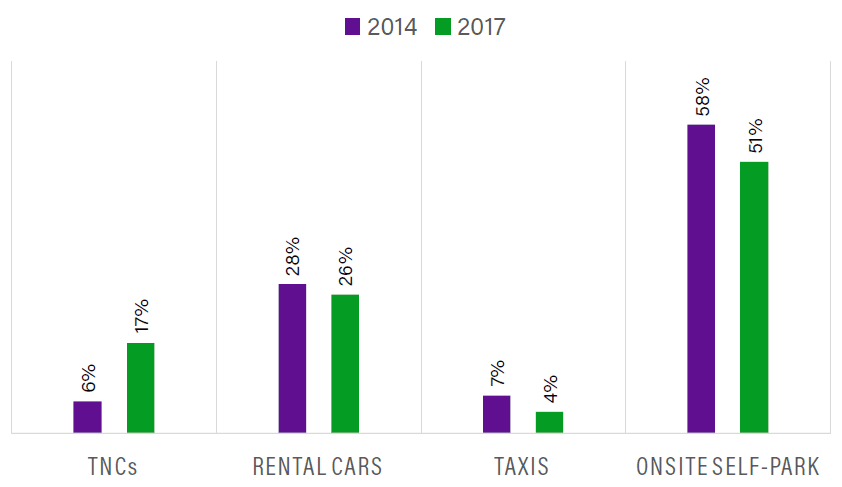
Some airports report delaying capital investment projects for new parking facilities, and in other locations, airport administrations reconsidered their land-side master plans.
And the data suggest that they should revisit those plans, given the major shift in how passengers get to and from the airport. Space reserved for close-in garages could be used to provide better terminal service and give airlines more options to deliver additional service.
To provide an excellent passenger journey, the most effective airports moved past TNCs initial disruption. Instead, they focus on the management and regulation of their customers’ new preferred method of arriving and exiting their airports. Even better, they’re adjusting their revenue models to account for the operational changes TNCs forced them to undergo.
While specific TNCs may come and go, the connected technology is here to stay. As part of the universe of for-hire transportation options, TNCs need to be organized along with taxis, limousines, black car, and other local options. Data show that TNCs should be considered the primary option for landside transportation at most airports.
It is common practice for airports to charge these land-side transportation providers an access fee to pick-up, drop-off, or both. Other airports charge fees on transit service to and from the terminal. As contracts are renewed for services and access, there should be an attempt to create equity among the various providers. As with all other services provided by the airport or by private entities nearby, the goal is providing travelers with a great passenger experience.
Across the country, the following approaches considering TNCs were implemented for managing land-side transportation operations:
The airport passenger journey begins and ends in different locations based on the travelers’ preferred method of mobility. Several factors play a key role in consumer selection, including the “3-Cs”—choice, cost, and convenience.
We find that a major influencer of airport mobility selection is how information is communicated regarding available parking products or transportation services.
Typical choices include private vehicle/ TNC passenger drop-off or pick-up at the curb, close-in self-parking, off-site self-parking, valet parking, reserved parking, or public transit. Each option provides a different expectation about the passenger journey in terms of the 3-Cs.
The goal of providing an excellent passenger journey requires aligning many existing and future operational and mobility variables while optimizing micro-solutions that work on a macro level.
While airports focus on achieving this goal, they must be mindful and proactive about TNCs, established by studies as the latest and largest disruptor.
Specifically, TNCs utilization, growth, and operational management are the major disruption at airports. Our work confirms that this disturbance varies in range, but undeniably affects an airport’s curb utilization, its revenue stream, and most importantly the passenger’s journey. Airport master plans prepared more than five years ago are very likely outdated.
Our experience working with airports around the country developing balanced solutions primarily focuses on re-establishing operational balance, optimizing future development, enhancing revenue, and providing an excellent passenger journey.
What we learned through our experience is while the process for success remains fundamentally the same, each situation has a unique, specific, localized solution.
There are numerous solutions available to improve land-side operations, increase airport revenue, and provide an excellent passenger journey.
Finding the most effective solutions requires an iterative process with solid data, alternative scenarios, and good cost data to help stakeholders make decisions that decrease operational cost and increase revenue.
In our experience, the most effective strategy is rating each product by convenience, identifying each product’s available capacity, identifying the capital cost and life-cycle cost, and then adjusting the parking rate or pick-up/drop-off charge accordingly. Using pricing, airports can incentivize the behavior desired based on their own priorities and capabilities.
With an increase in TNCs volume and the added curb management costs, their airport-access rates and on-site parking rates can be determined to ensure a positive outcome for your passengers and your airport.
A holistic approach, combined with a proven process, offers airports the ability to take back the curb and help revenues take off!
For more information about this study or to have a conversation with one of our Parking Consulting and Mobility experts, please contact us today.

WGI is a national design and professional services firm leading in technology-based solutions for the construction of public infrastructure and real estate development. At WGI, we’re providing Tomorrow’s Infrastructure Solutions Today.

Discover the 3D design software breakthroughs that are enabling designers to accomplish things that CAD users could only dream about.
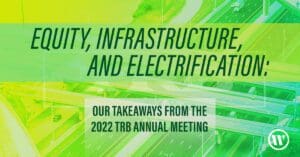
Transportation professionals from around the world recently gathered for the Transportation Research Board (TRB) Annual Meeting in Washington, DC. Here are the biggest takeaways that will color our perspective on transportation and mobility issues in 2022 and beyond.

Grocery-delivering bots tackle a simpler challenge than self-driving vehicles. But there are still some challenges yet to be worked out.
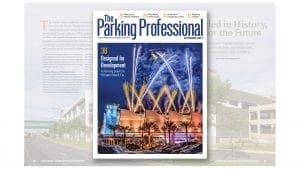
Duluth’s new transportation center respects history and embraces transportation and mobility.
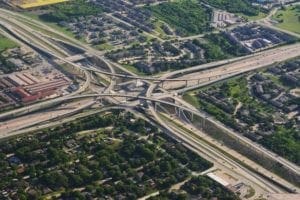
If you are developing a property on a roadway that is controlled by the Texas Department of Transportation (TxDOT), you will have to consider TxDOT standards on driveway spacing. WGI can help.

Despite campus parking returning to pre-COVID demand, university parking departments are being asked to do more with less.
You’ve been searching for a place like WGI. We look forward to meeting you soon.
Sign up to receive emails to hear our latest news and achievements in our monthly newsletter.
Enter your zip code, and we’ll personalize your experience with local projects, office locations, team members, and more.
WGI supports its associates with meaningful opportunities for growth, strong benefits and perks, while we work collaboratively with clients and co-consultants to shape and improve communities.






WGI is a dynamic organization with opportunities nationwide for engineers, land surveyors, landscape architects, environmental scientists, and architects.